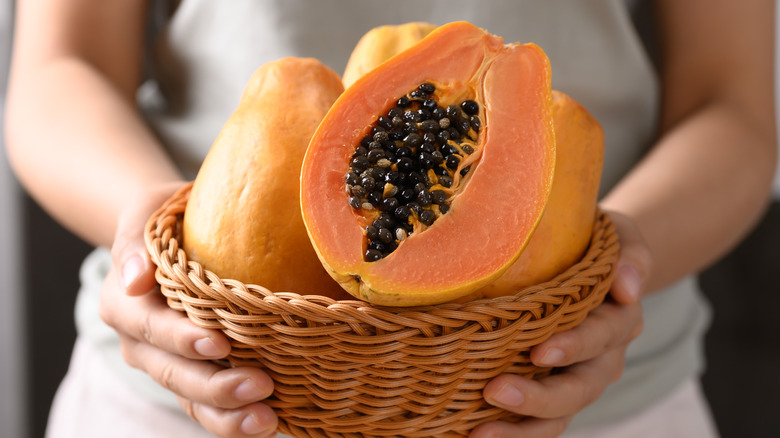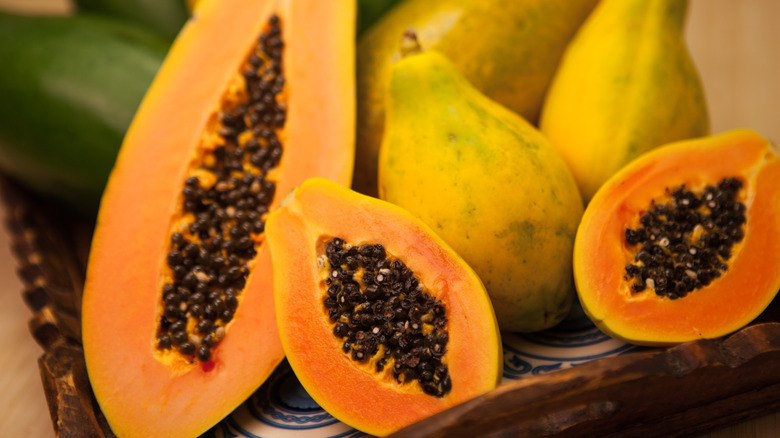How To Choose A Perfect Papaya
When summer kicks into high gear, so does papaya season. From May to September, the bulbous green-skinned, orange-fleshed fruit forms piles at local grocery stores in line with the traditional harvesting time (although tropical locations can produce it all year). While familiar to most U.S. shoppers, papayas still contain enough mystery to second-guess adding one to the shopping basket. Considering the many health benefits that come with papayas — plus its amazing ability to tenderize steaks — it's a good idea to overcome this by learning how to select the perfect papaya.
The first thing to look for is the skin, which changes from green to yellow or orange as it ripens. Look for one that's almost fully transformed. Just be sure to watch out for blemishes, dark spots, and even mold, which may indicate it's overripe. Next, give the papaya a gentle squeeze as you would an avocado — there should be a little give but not too much. Start at the stem, where the papaya ripens first. Now, hold the papaya to your nose. The aroma should be sweet, fruity, and musky, and easy to discern. Other elements to look for that may improve quality include the location of producer — the closer the better — and size, as smaller papayas tend to taste better. Checking the weight can help, too, as ripe papayas are heavier because of water. With the ideal fruit, it'll be easier to slice a papaya correctly.
How to ripen papaya at home
While you may indeed find a perfect papaya that ticks all the boxes of selection on your lucky day, it's common to fall short of at least one criterium. In this case, you'll want to choose a papaya that's somewhat underripe to mature further at home. This is also a better option if you don't plan to eat the fruit right away, so it'll become ripe at the same time you are ready to slurp down or share. The only exception is if you want the more savory flavor of an underripe one, as used in green papaya salad, for example.
The simplest way to ripen your papaya is to leave it out at room temperature, which can take a few days. Sticking it in the refrigerator will slow down the ripening process, as cold air suppresses the hormone ethylene that's responsible for ripening. To speed the process further, place the papaya in a paper bag and seal it, trapping the ethylene inside. Adding a second ripening fruit will turbo-boost the process thanks to the increased amount of ethylene gas. Scoring the skin with a fork or knife may help release more of the gas, too. Just be sure not pierce the flesh, which may spoil quickly if exposed to the hormone directly. This is why it's important to keep a close eye on your papaya in the bag and remove once it's ready. Otherwise your perfect papaya can quickly turn putrid.

